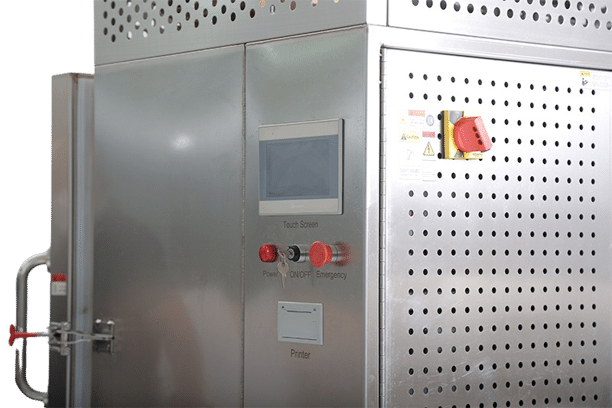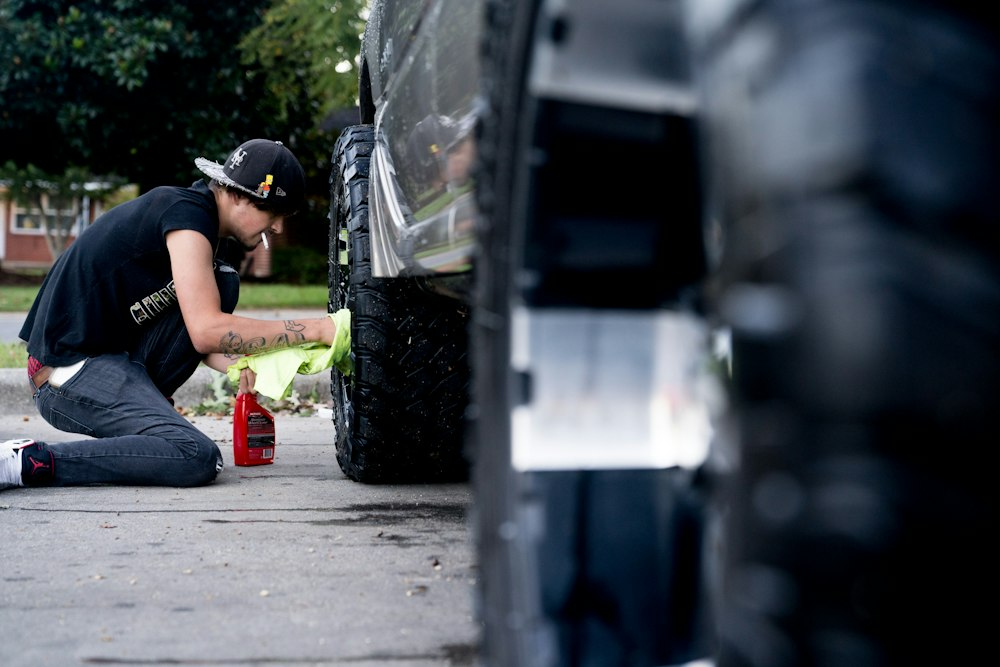The Exhaust Gas Recirculation (EGR) system plays a crucial role in modern automotive engines, helping reduce harmful emissions and improve fuel efficiency. At the heart of the EGR system is the EGR cooler, a component responsible for cooling the recirculated exhaust gases before they are reintroduced into the combustion chamber. Over time, however, the EGR cooler can accumulate carbon deposits and contaminants, leading to diminished performance, increased fuel consumption, and potential engine issues. To ensure your vehicle operates at its best, regular maintenance, including EGR filter cleaning, is essential.
In this comprehensive guide, we will walk you through the step-by-step process of cleaning an EGR cooler, providing valuable insights and tips to help you maintain optimal engine performance and prolong the life of your vehicle.
Understanding an EGR Cooler and Its Working
The Exhaust Gas Recirculation (EGR) system is a crucial component in modern internal combustion engines, designed to address environmental concerns by reducing nitrogen oxide (NOx) emissions. At the core of the EGR system is the EGR cooler, a specialized device that plays a vital role in the recirculation process.
The Function of the EGR System
The primary purpose of the EGR system is to control and minimize the production of harmful nitrogen oxides during the combustion process. Nitrogen oxides are a group of pollutants that contribute to smog formation and pose environmental and health risks. The EGR system achieves emission reduction by diverting a portion of the exhaust gases produced during combustion and reintroducing them into the engine’s intake manifold.
Role of the EGR Cooler
The EGR cooler specifically addresses the challenge of introducing hot exhaust gases back into the combustion chamber. Without proper cooling, the elevated temperatures of these gases could lead to increased combustion chamber temperatures, resulting in potential engine damage and the formation of unwanted emissions.
The EGR cooler is positioned in the EGR circuit, typically between the exhaust manifold and the intake manifold. Its primary function is to cool the recirculated exhaust gases before they re-enter the combustion process. By reducing the temperature of the exhaust gases, the EGR cooler helps prevent engine overheating, lowers combustion temperatures, and minimizes the formation of NOx emissions.
Working Principle of the EGR Cooler
When the engine is in operation, a portion of the exhaust gases is diverted from the exhaust manifold and directed through the EGR cooler. The cooler contains a series of tubes or passages through which the hot exhaust gases flow. Concurrently, coolant from the engine’s cooling system circulates around these passages, absorbing and dissipating the heat from the exhaust gases.
As the exhaust gases pass through the EGR cooler, the heat exchange between the hot gases and the circulating coolant takes place. This process effectively lowers the temperature of the exhaust gases before they are reintroduced into the intake manifold and mixed with fresh air for combustion. The cooled gases help regulate combustion temperatures, ultimately reducing the formation of NOx emissions.
Importance of EGR Cooler Efficiency
Maintaining the efficiency of the EGR cooler is critical for the overall performance and emission control of the engine. Over time, carbon deposits and contaminants can accumulate within the cooler, impeding its ability to effectively cool the recirculated exhaust gases. This can lead to increased engine temperatures, diminished fuel efficiency, and heightened emissions.
Signs of a Dirty EGR Cooler
The Exhaust Gas Recirculation (EGR) system is intEGRal to your vehicle’s performance and environmental responsibility. Over time, the EGR cooler, a key component of this system, can accumulate deposits and contaminants, leading to various signs that indicate the need for cleaning. Identifying these signs early on is crucial to maintaining optimal engine efficiency. Let’s explore the warning signals that suggest a dirty EGR cooler.
Reduced Engine Performance
One of the primary indicators of a compromised EGR cooler is a noticeable reduction in engine performance. As carbon deposits build up within the cooler, the flow of recirculated exhaust gases becomes restricted. This restriction disrupts the balance of air and fuel mixture entering the combustion chamber, resulting in decreased power output. If you find your vehicle struggling during acceleration or experiencing a sluggish response, a dirty EGR cooler may be the culprit.
Increased Emissions
The EGR system is designed to mitigate harmful nitrogen oxide (NOx) emissions by recirculating a portion of exhaust gases back into the combustion process. When the EGR cooler is dirty, it fails to efficiently cool these gases, leading to higher combustion temperatures. Elevated temperatures contribute to the formation of excess NOx emissions, compromising your vehicle’s environmental performance. If you notice an increase in emissions during vehicle inspections or experience a distinct change in exhaust color, it’s time to consider the cleanliness of your EGR cooler.
Poor Fuel Efficiency
A dirty EGR cooler can adversely impact fuel efficiency, causing your vehicle to consume more fuel than usual. The compromised cooling efficiency leads to suboptimal combustion, forcing the engine to work harder to achieve the desired power output. This increased workload results in higher fuel consumption and reduced miles per gallon (MPG). If you find yourself making more frequent trips to the gas station or notice a significant drop in fuel efficiency, it’s wise to investigate the condition of your EGR cooler.
Warning Signs to Look Out For
Illuminated Check Engine Light (CEL)
A persistent check engine light can be an early warning sign of EGR system issues, including a dirty EGR cooler. Modern vehicles are equipped with onboard diagnostics that can detect irregularities in the system.
Engine Roughness or Misfires
A dirty EGR cooler can disrupt the combustion process, leading to engine misfires or rough idling. If you feel vibrations or notice irregular engine behavior, it’s essential to address these symptoms promptly.
Unusual Noises
Any strange noises, such as knocking or pinging sounds, may indicate combustion irregularities caused by a dirty EGR cooler. These noises can be a result of unburned fuel or poor ignition timing.
Excessive Smoke from Exhaust
An increase in smoke, particularly black or dark gray exhaust, suggests incomplete combustion. This can be attributed to the inefficient cooling of recirculated exhaust gases by a dirty EGR cooler.
Being vigilant about these warning signs allows you to address EGR cooler issues proactively. In the following sections, we will delve into the steps involved in cleaning the EGR cooler, ensuring you can restore its efficiency and preserve your vehicle’s overall performance.
Necessary Tools and Materials
Before embarking on the journey of cleaning your Exhaust Gas Recirculation (EGR) cooler, it’s essential to gather the right tools and materials to ensure a smooth and effective process. Here’s a comprehensive guide on what you’ll need:
Compilation of Tools
Socket and Wrench Set
Assorted socket sizes and a reliable wrench set will be necessary for removing bolts and nuts and securing the EGR cooler in place.
Screwdriver Set
A set of screwdrivers, including both flathead and Phillips-head varieties, will assist in disassembling components and removing screws.
Pliers
Needle-nose pliers and regular pliers are handy for gripping and maneuvering various components during the cleaning process.
Torque Wrench
A torque wrench is crucial for properly tightening bolts during the reinstallation of the EGR cooler, ensuring optimal functionality.
EGR Cleaner Tool (if applicable)
Some EGR coolers may have specialized cleaning tools designed to access and clean hard-to-reach areas within the cooler.
Gloves
Wearing gloves will protect your hands from chemicals and contaminants during the cleaning process.
Safety Glasses
Eye protection is vital when working with cleaning solutions and disassembling components to prevent any potential splashes or debris.
Ratchet Straps (if needed)
If the EGR cooler needs to be temporarily secured during removal or transport, ratchet straps can be invaluable.
Required Cleaning Materials
EGR System Cleaner
Choose a high-quality EGR system cleaner that is specifically designed to break down carbon deposits and contaminants within the cooler.
DEGReaser
A dEGReaser will help in cleaning oily residue and built-up grime from EGR components.
Soft Bristle Brush
A soft-bristle brush is useful for gently scrubbing away deposits without causing damage to the EGR cooler surfaces.
Container for Soaking Parts
A container large enough to soak smaller EGR components in the cleaning solution for thorough cleansing.
Rags or Shop Towels
Absorbent rags or shop towels are necessary for wiping down components and cleaning up any spills or excess cleaning solution.
Coolant (if coolant needs to be drained)
Depending on your vehicle’s design, you may need to drain and refill the coolant, so having the appropriate coolant on hand is essential.
Importance of Safety Gear
Protective Gloves
Chemical-resistant gloves protect your hands from harsh cleaning solutions and contaminants, ensuring your safety during the cleaning process.
Safety Glasses
Eye protection is critical to shield your eyes from any splashes of cleaning solutions or debris that may occur during the cleaning and disassembly.
Appropriate Clothing
Wear clothing that covers your arms and legs to prevent direct contact with cleaning solutions and minimize the risk of skin irritation.
Respirator Mask (if needed)
If working in a confined or poorly ventilated space, a respirator mask may be necessary to protect against fumes from cleaning solutions.
Step-by-Step Cleaning Procedure
Embarking on the journey to clean your Exhaust Gas Recirculation (EGR) cooler requires a systematic approach to ensure thorough cleansing and restoration of optimal performance. Let’s delve into the step-by-step cleaning procedure, covering the removal of the EGR cooler from the vehicle, disassembling its components, and employing effective cleaning solutions and methods.
Removing the EGR Cooler from the Vehicle
Locating the EGR Cooler
Refer to your vehicle’s service manual to locate the EGR cooler. In most cases, it’s positioned between the exhaust manifold and the intake manifold. Identify the specific mounting points and connections.
Proper Disconnection Process
Before removing the EGR cooler, disconnect the negative terminal of the battery to ensure safety. Then, proceed to detach any electrical connectors, vacuum lines, or hoses connected to the EGR cooler. Carefully label these connections for ease of reinstallation.
Using the appropriate socket and wrench, remove the bolts securing the EGR cooler in place. Keep track of the location and size of each bolt to facilitate reassembly.
Once all connections are detached, carefully lift the EGR cooler out of its mounting position. Be cautious not to damage any surrounding components during removal.
Disassembling EGR Cooler Components
Explanation of EGR Cooler Components
Familiarize yourself with the different components of the EGR cooler, including the cooler housing, tubes, and any associated valves. Understanding the structure will aid in effective disassembly and cleaning.
Techniques for Disassembly
Begin by separating the cooler housing from the internal components. This may involve removing screws or bolts securing the housing. Once the housing is open, inspect the internal components, such as the EGR valve and associated tubes. Note their positions for reassembly.
Utilize appropriate tools like screwdrivers and pliers to carefully disassemble the components. Take note of the order in which they are removed to facilitate reassembly.
Cleaning Solutions and Methods
Recommended Cleaning Solutions
Choose a high-quality EGR system cleaner designed to break down carbon deposits and contaminants. Follow the manufacturer’s recommendations for the specific cleaner, as different solutions may have varying application methods. For particularly stubborn deposits, a dEGReaser can be applied to help break down oily residue. Ensure the dEGReaser is compatible with the materials of the EGR components.
Safe Cleaning Methods for Different Components
Cooler Housing
Immerse the cooler housing in a container filled with the recommended cleaning solution. Allow it to soak for the specified duration to loosen and dissolve carbon deposits. Use a soft bristle brush to scrub away any remaining residue.
Tubes and Valves
Submerge smaller components, such as tubes and valves, in the cleaning solution. If applicable, use a small brush or pipe cleaner to navigate through the tubes and remove deposits.
External Surfaces
Wipe down the external surfaces of components with a rag or shop towel soaked in the cleaning solution. Ensure thorough coverage to eliminate any remaining contaminants.
Rinsing
After cleaning, rinse all components with clean water to remove any residue from the cleaning solution. Allow the components to air dry or use compressed air to speed up the drying process.
By following this step-by-step procedure, you’ll successfully disassemble, clean, and prepare the EGR cooler components for inspection and reinstallation.
Drive cleaner, drive better with 30 Minute DPF Clean!
Revitalize your diesel vehicle’s performance with 30 Minute DPF Clean – your premier DOC/DPF filter cleaning experts.
Our specialized diesel specialists use cutting-edge hydraulic cleaning to efficiently clear DPF, DEF systems, and EGR valves in just 30 minutes. Don’t let a blocked DPF affect your engine’s efficiency – trust us for quick, effective, and affordable cleaning services. We also offer catalytic converter unblock/unclog and cleaning services.
For 30 Minute DPF Cleaning, consider reaching out to professional DPF cleaning services for efficient and reliable cleaning dpf.
Experience the difference of proper maintenance with our expert team. Call us for a quote and bring your diesel filters to us today




